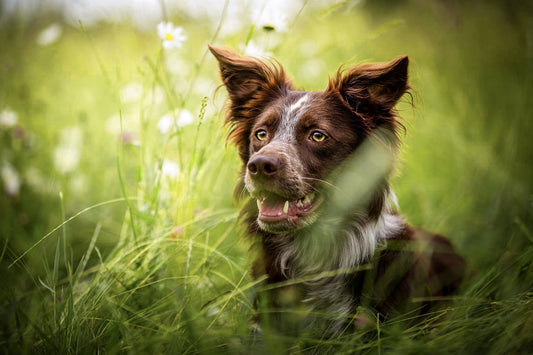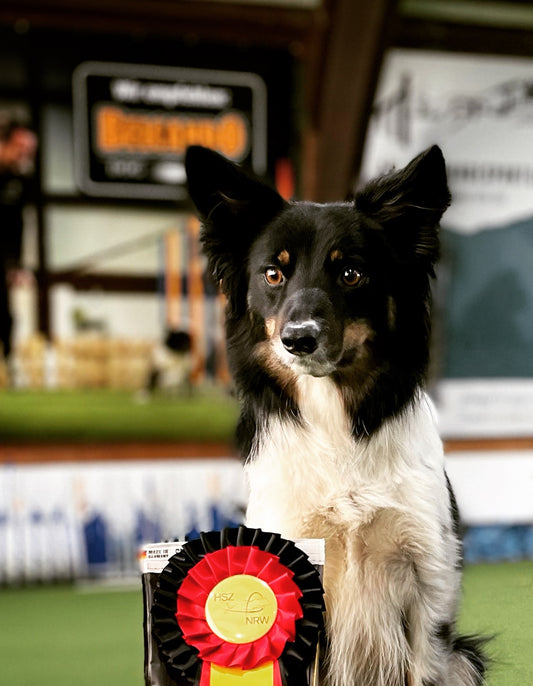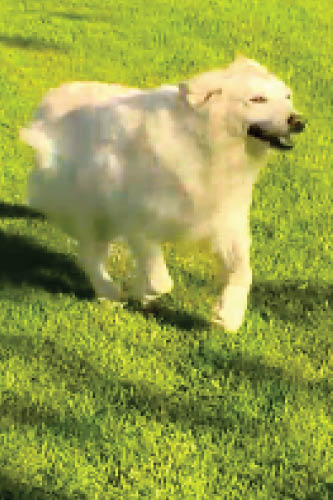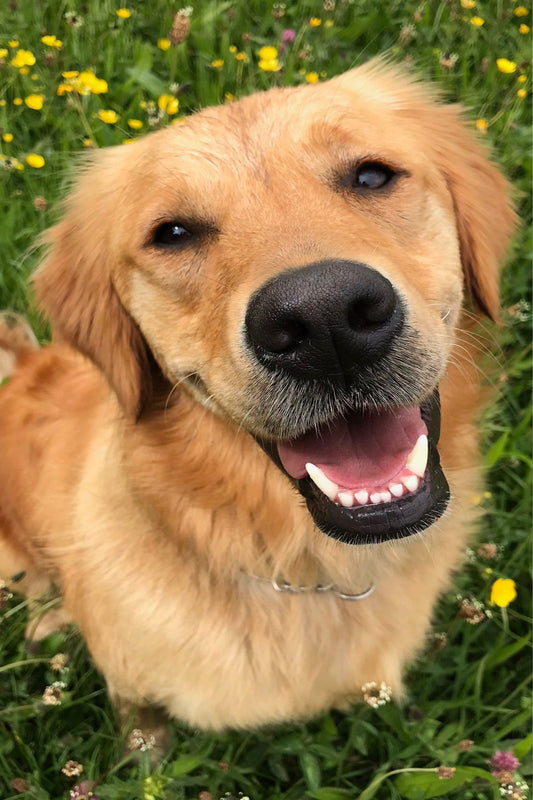Managing pet mobility post surgery can often feel like navigating a minefield for pet owners. Just when you feel like you've found a clear path, the slightest misstep triggers a series of catastrophic events. Unfortunately, the severity of the hurdle is often compounded by the time initial mobility issues show up and are seen.
“ There are a large number of dogs and cats that have OA but have not yet been formally diagnosed. Why is this? Let's look at three very common problems in dogs: 1) ACL rupture of the knee 2) Hip dysplasia 3) Elbow dysplasia, all of which lead to the gradual or silent progression of arthritis ”
Bonnie's mother (Aimee) did everything in her power to ensure her two labradors (Fergus & Bonnie) were raised as healthy as possible. It was then a devastating blow to receive confirmation that Bonnie, their youngest dog, had a fragmented coronoid.
This is Aimee and Bonnie's journey so far:
Find Bonnie
Bonnie was the puppy I had been waiting for, I had been desperately looking for a second dog for some time. We researched, visited different breeders, met dogs and a few litters. Then I looked at Bonnie's litter and fell in love with the only one in the litter with white spots... Bonnie.
We got to choose the litter a second time, so we had to wait another week to see if we could bring Bonnie home. We spent ages with all the puppies together and apart and decided we chose Bonnie.
Fast forward 12 months and we've had quite an eventful year with Bonnie; Surgery and rehab (along with a global pandemic!). It wasn't quite the year we had envisioned. But luckily, Bonnie is building her powers every day.
5 months old
It all started during a trip to a duck pond when Bonnie was just 5 months old. As she ran across a field we heard her crying and on her return she was limping on one of her hind legs.
We picked her up and took her home and then to the vet. Bonnie was then examined by a veterinarian. However, by this time she was walking perfectly on all 4 limbs again with no sign of pain or discomfort. The vet checked her and said she was fine, followed by bed rest for a few days.
11 months old
During a walk, Bonnie raised her left front leg as if she had something in her paw. I checked her paw and legs and she pointed
no complaints and immediately afterwards she was fine and walked away happy. A few days later she hobbled on the same leg while we were playing in the garden and then again a few days after that. The limp were 3-4 steps each time and then she was perfectly fine. After the 3rd limp over a period of about 10 days I got an appointment with an orthopedist I work for who agreed to see her the following week.
Bonnie was then examined by the orthopedist who on examination showed no pain or discomfort with the manipulation of any leg joint. She had good range of motion in all limbs and walked and trotted normally. But he had noticed that she wasn't evenly distributing her weight on her front legs.
A CT scan was discussed and we decided to do it that afternoon. Right after the CT scan I had a Zoom phone consultation with the vet who then confirmed what we had feared. She had a fragmented coronoid process in her left front leg and this surgery was the best option going forward. She was booked for surgery the very next day.
3 weeks after the operation
We now had a very long road of recovery ahead of us. 3 weeks after the operation, Bonnie was on complete bed rest for two weeks. We were now allowed to work up to two 10-minute walks a day.
What I didn't expect was the time it took! The time for their recovery, for reading or the amount of physical therapy after surgery. I'm not talking about taking her to a physical therapist, I mean physical therapists that I have to do with her myself. For those first two weeks, I spent an hour three times a day treating her with physio and putting an ice pack on her joint. Combine this with lots of brain games, teaching tricks and being fed a variety of different puzzle prey animals and caring for Bonnie became a full time job for me. Not that I mind, I promised Bonnie that I will do absolutely everything I can to make sure she stays happy, comfortable and pain free. But it was exhausting.
Asking the why
Some common causes of elbow dysplasia can include genetics, over-exercising, puppy obesity, or malnutrition. But Bonnie comes from fully health tested parents with low (OO) elbows, she wasn't overexerted. In fact, we were wary of how much walking she did, and she was often carried as a puppy. Movement was never forced on her. She is a lean dog and was fed one of the highest quality kibbles on the market with additional nutritional supplements.
I've spent hours and days blaming myself and wondering how, why and when it happened to her. Was it the day she played out in the field and cried out? Was it from a previous walk? Was it because he was playing Fergus too roughly? Was it because she decided to use the stairs one day? Is it because she likes to cuddle with me standing up? Whatever, the answer is we'll honestly never know what happened. Only what is happening now will continue.
We obviously still have a long and winding road to recovery ahead of us and I expect setbacks from time to time. But I'm optimistic that Bonnie will remain her happy, cheerful self and live a fulfilling life with Fergus and I. You can follow us as we travel our journey both here and on ours.
aimee
Community Support
For many pet owners, the stress of seeing loved ones acting withdrawn or just out of character can feel like an uphill battle in itself. Reducing that anxiety through quality care is key! If you have any concerns, always check with your veterinarian first.
For a space and community to share similar experiences, why not join our Facebook group for pet mobility tips and discussions from other like-minded pet parents.
Or if you're looking for a more comprehensive guide on how to help OA pets, you might also read: Helping OA Pets: With Cameron Black BVMS MVetSci PhD MRCVS











